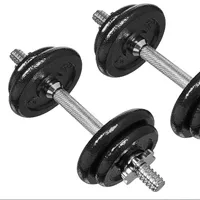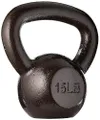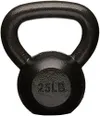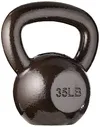
We all put numbers to our workout methods, whether we realize it or not — but have you ever tried the 6-12-25 gym rule? Made popular by bodybuilders, the method is said to build muscle and strength using a particular style of training — volume.
But we’re not talking Pilates-style volume here, where you only use light loads for high reps to increase muscle endurance. No, no, no — we’re talking huge gains, big pumps and swole muscle hypertrophic overload.
As with any gym protocol, form is key, and you’ll need to follow the instructions below closely to benefit from the 6-12-25 workout gains. Here’s everything you need to know.
What is the 6-12-25 workout method?
We're all strapped for cash right now, so why not spend wisely and pick up Amazon's basic adjustable dumbbells, which offer you 38lbs total weight per dumbbell and easily adjust on the fly.
The training protocol comes from strength coach Charles Poliquin and uses giant sets to overload muscles into growth — a technique called hypertrophy. Giant sets refer to a group of three or more exercises performed with little to no rest between them, as you move straight from one to the next. Like a superset, but... bigger.
This increases overall volume and minimizes rest, making your workout more efficient. Traditionally, you’ll incorporate three exercises into one set and focus on one muscle group at a time (per set).
The protocol involves performing six, 12 and 25 reps (hence the name) and three to five sets. You can take 3 minutes' rest between sets, not exercises.
For sets requiring fewer reps (six), you’ll tap into strength training with heavier loads and compound exercises like the bench press. For sets requiring moderate reps (12), you’ll reduce the load slightly and focus on accessory or isolation exercises. Finally, for the higher rep ranges (25), focus on lighter load and accessory or isolation exercises.
Get instant access to breaking news, the hottest reviews, great deals and helpful tips.
Here’s an example for each of the major muscle groups:
- Chest: 3-5 sets
- Bench press: 6 reps
- Shoulder press: 12 reps
- Reverse flyes: 25 reps
- 3 minutes rest
- Back: 3-5 sets
- Pull-up: 6 reps
- Single-arm row: 12 reps
- Weighted superman: 25 reps
- 3 minutes rest
- Legs: 3-5 sets
- Front squat: 6 reps
- Good morning: 12 reps
- Hamstring curls: 25 reps
- 3 minutes rest
You could split these up by session, like chest on Monday, back on Tuesday and legs on a Thursday, for example. You could create a chest and back pairing and save legs for later in the week.
You could even create a mammoth full-body workout and hit them all in the same session, but remember that you’ll need at least 24 to 48 hours to recover before you go again.
You’ll also need to figure out a submaximal load for each, allowing for the last few reps to feel very testing. That means lifting much heavier for 6 reps and a whole lot lighter for 25.
I recommend learning to calculate your one-rep max first, and checking out how to "run the rack," because this will give you a better idea of how to manage loading.
What are the benefits of the 6-12-25 method?
You get to tap into multiple training principles here — strength, hypertrophy and endurance.
Strength training typically focuses on fewer reps and heavier load very close to your one-rep max; hypertrophy requires you to progressively overload muscles by applying mechanical tension and creating stress, using submaximal loads and rep ranges; endurance training typically involves much lighter weight for high rep ranges, teaching muscles to, quite literally, endure and become fatigue-resistant.
Using this method, you can progressively increase load and adapt as you get stronger (read: hypertrophy vs strength training).
Not only can you focus on strength and muscle growth, but you can also include compound exercises that are functional with accessory moves or isolation exercises that allow you to hone in on one specific, supporting muscle group (read: agonist vs antagonist muscle groups). The combination will give you that serious after-workout pump, down to sheer volume, blood flow and effort.

Follow Tom's Guide on Google News and add us as a preferred source to get our up-to-date news, analysis, and reviews in your feeds.
More from Tom's Guide
- ‘Get long and strong,' says a mobility coach — try this 5-move mobility flow routine to unlock looser joints
- Nope, not sit-ups — expert coach shares his three-move recipe for building real core strength
- Forget the gym — this 3-move kettlebell workout builds power, strength and endurance in your whole body

Sam Hopes is a level 3 qualified trainer, a level 2 Reiki practitioner and fitness editor at Tom's Guide. She is also currently undertaking her Yoga For Athletes training course.
Sam has written for various fitness brands and websites over the years and has experience across brands at Future, such as Live Science, Fit&Well, Coach, and T3.
Having coached at fitness studios like F45 and Virgin Active and personal trained, Sam now primarily teaches outdoor bootcamps, bodyweight, calisthenics and kettlebells.
She also coaches mobility and flexibility classes several times a week and believes that true strength comes from a holistic approach to training your body.
Sam has completed two mixed doubles Hyrox competitions in London and the Netherlands and finished her first doubles attempt in 1:11.
You must confirm your public display name before commenting
Please logout and then login again, you will then be prompted to enter your display name.








